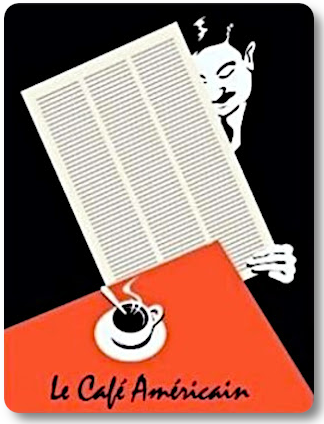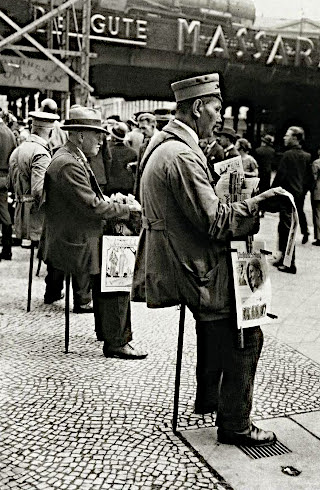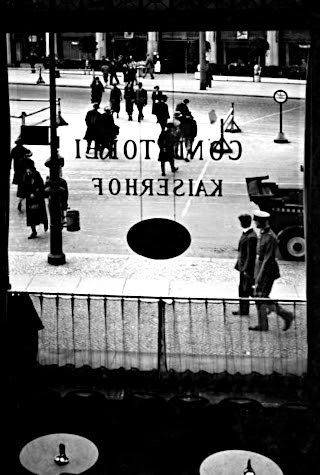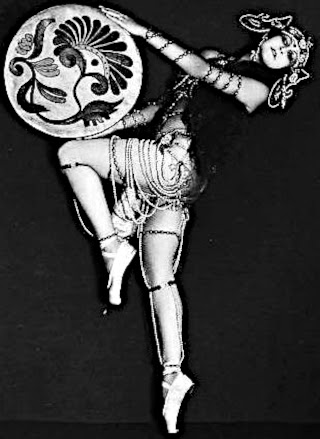For the first time we had a 'jobless recovery' after the tech bubble bust thanks to the wonders of Greenspan's monetary expansion and the willingness (gullibility?) of the average American to assume enormous amounts of debt, largely based on home mortgages, the house as ATM phenomenon. Not to mention the large, unfunded expenditures of the government thanks to tax cuts and multiple wars.

Now the pundits are talking about the hopes for another jobless recovery.
Who is going to go deeply into debt this time? It looks like its the government's turn. And the expectation is that foreigners will continue to suck up the debt.

If you think this explosion of Federal debt will facilitate a stronger US dollar you might be suffering from ideological myopia or some other delusion.
Some years ago we forecast that the financiers and their elites would take the world down this road of leveraged debt and malinvestment, and then make you an offer that they think you cannot refuse. They will seek to frighten you with a collapse of the existing financial order, because that is what they fear the most themselves, for their own unique positions of power.
The offer will be a one world currency, which is a giant step towards a one world government, managed by them of course. Once you control the money, local fiscal and social preferences start to matter less and less.
This theory seems more plausible today than it did then.
28 October 2009
About The Jobless Recovery ....
Restoring Glass-Steagall
"Successful crime is dignified with the name of virtue; the good become the slaves of the wicked; might makes right; fear silences the power of the law." Lucius Annaeus Seneca
Restoring Glass-Steagall is such an obvious move that one has to wonder why it is not being more seriously considered.
Granted, it took a multi-year lobbying effort and the expenditure of many millions of dollar to subvert a national regulatory and political process to overturn it, largely led by Sandy Weill of Citigroup. Frontline: The Long Demise of Glass-Steagall.
And with the return of the Clinton crowd as Obama's key financial advisers, led by Larry Summers and young Tim, supplemented by more mercenaries from the-investment-bank-that-must-not-be-named, perhaps it is unreasonable to expect the Reformer to enact such a simple, time-tested reform.
Perhaps Barney Frank and Chris Dodd can bring the Princes of Wall Street down to Washington again, profusely thank them for taking time from their busy day to speak to the people's representatives, privately thank them for their generous campaign contributions, and simply ask them what they will accept as regulation again.
It is important to bear this in mind, because it tends to knock down the assertion that the current financial crisis is somehow an act of God, something that just happened. There was an intent to subvert the regulatory process, to increase leverage beyond what has long been known to be prudent, and to engage in systemic fraud with a group of enables and agencies, such as the ratings firms, in order to reap fabulous personal profits for a small group at the expense of the many. There was planning, premeditation, malice aforethought. They may not have intended to harm; they just did not care. They really truly did not care, if they got theirs.
Until the banks are restrained, and the financial system reform, and balance restored to the economy, there will be no sustained recovery.
And there can be no better start than to stop the gambling with the public money that is the core of the existing US banking system. The parallels with organized crime and the subversion of the public interest through graft and corruption are compelling. And one thing we must accept is that the financiers will never be able to reform themselves, to regulate themselves, to even tell the truth overmuch about regulation while they are still 'in the game.' It goes against their very nature, their creed, the rules of their profession. They keep what they kill, and everything that is not theirs is fair game.
How bad does it have to get in the US before the people finally speak out? Wait and see, because it will be getting worse, a lot worse than you might imagine. And each day of delay adds a pound of misery for your children and grandchildren to carry. Do you really think so little of them?
Volcker’s AdviceAbove all, reforming the cesspool that is the US electoral process of campaign financing, which is an advert for graft and soft bribery, would help as well. There is no foolproof regulatory process when those who control it are 'on the take' or even more openly working for those who seek to subvert it.
NY Times
October 22, 2009
To the Editor:
Re “Volcker’s Voice, Often Heeded, Fails to Sell a Bank Strategy” (front page, Oct. 21):
As another older banker and one who has experienced both the pre- and
post-Glass-Steagall world, I would agree with Paul A. Volcker (and also Mervyn
King, governor of the Bank of England) that some kind of separation between
institutions that deal primarily in the capital markets and those involved in
more traditional deposit-taking and working-capital finance makes sense.
This, in conjunction with more demanding capital requirements,
would go a long way toward building a more robust financial sector.
John S. Reed
New York, Oct. 21, 2009
The writer is retired chairman of Citigroup.
Tavakoli on Goldman's Lies of Omission
Lies of omission and forgetfulness are difficult to prove and even harder to prosecute. "Not that I recall" and "not to my knowledge" are favorite defense statements, adornments to a plea of inanity much favored by the corporate upper crust, made famous by Skilling and Lay. Among politicians it is known by the weighty phrase, plausible deniability.
Janet Tavakoli asks, Did Goldman Lie? One is tempted to ask, 'were their lips moving?'
But why the bluff? Why did Goldman have to pretend it was not concerned at all about AIG, even as the phone records show they were involved in intense and continuing discussions at the highest levels in the bailouts, with a unique and privileged presence in discussions with the government and the Fed in which their own place in the bailout queue must have been surely discussed? And at the time their own man was the Chairman of the NY Fed.
And as someone asked, Why pick on Goldman? Well, they seem to be at the center of everything.
No answers yet, and there may never be a way to penetrate the financial Star Chamber that is the Obama Treasury and the NY Fed. But here is some additional information worth reading.
Goldman's Lies of Omission
By Janet Tavakoli
October 28, 2009
In my opinion, David Viniar’s (CFO of Goldman Sachs) comments in the fall of 2008 were a lie, and for that matter, Lloyd Blankfein’s (CEO of Goldman Sachs) later comments to the Wall Street Journal were disingenuous.
In the context of what was happening near the time of AIG’s implosion, the key question was “What is going on between Goldman and AIG?” Their rhetoric surrounding this issue is a deft dodge. They may claim they didn’t “technically” lie, but Goldman’s business exposure to AIG posed both credit risk and reputation risk. They seem to overlook elements of the former and put insufficient value on the latter.
Goldman should have plainly stated that it was owed billions in additional collateral from AIG — after already having collected billions — due to credit default swap contracts and other trading positions. Whether or not Goldman thought its credit risk was totally hedged is a separate, albeit important issue, and I’ll get to that later.
Among the proximate causes of AIG’s failure were previous calls for collateral made by its credit default swap trading counterparties, including Goldman Sachs. They were entitled to pressure AIG on its prices and demand more collateral; I had publicly challenged AIG’s prices myself more than a year earlier. These actions gave a major push to AIG’s subsequent credit downgrade, which tripped contract triggers that AIG had unwisely permitted its more clever counterparties to insert. (The credit default swap market is not standardized.) This meant AIG had to come up with collateral equal to the entire remaining amount of the credit default swap contract.
Unfortunately, AIG was essentially bankrupt at this point and it couldn’t meet its obligations. The government could have stepped in and renegotiated its contracts. [Goldman’s “hedges” might have disputed whether a reduced payment triggered a restructuring event, if applicable, in their contracts.] But that isn’t what happened...
Click here for the rest of the story: Goldman's Lies of Omission - (pdf) Tavakoli Finance
27 October 2009
GMAC Becomes First 'Bank' To Come Back for a Third Bailout

There will be more players rolling over, and the poorly connected, broken banks will come staggering back from the land of green shoots with leaking balance sheets and bleeding income statements. The big Banks will keep taking chips and tips from Ben and Tim, a little peek at the hole cards, a friendly dealer on the flop, until the time comes to turn over that last river card, and move on to a differet town and a new game.
Where's GMAC at this table? Are you kidding me? They are outside parking cars.
Wall Street Journal
GMAC Asks for Fresh Lifeline
By DAN FITZPATRICK and DAMIAN PALETTA
Lender in Advanced Talks for Third Slug of Taxpayer Cash -- at Least $2.8 Billion
In a stark reminder of how some battered financial firms remain dependent on government lifelines, GMAC Financial Services Inc. and the Treasury Department are in advanced talks to prop up the lender with its third helping of taxpayer money, people familiar with the matter said.
The U.S. government is likely to inject $2.8 billion to $5.6 billion of capital into the Detroit company, on top of the $12.5 billion that GMAC has received since December 2008, these people said. The latest infusion would come in the form of preferred stock. The government's 35.4% stake in the company could increase if existing shares eventually are converted into common equity.
The willingness by Treasury officials to deepen taxpayer exposure to GMAC reflects the troubled company's importance to the revival of the auto industry. Founded in 1919, GMAC has $181 billion in assets and is a major financier for 15 million borrowers and thousands of General Motors and Chrysler car dealerships.
The new capital would help firm up GMAC's balance sheet and solidify its auto-loan business. GMAC provides the vast majority of wholesale financing for GM dealerships across the country, meaning thousands would be unable to bring new vehicles onto their lots if GMAC were to collapse.
Federal officials also are moving to shore up GMAC's ability to fund its daily operations, with the Federal Deposit Insurance Corp. telling the company Tuesday the agency will guarantee an additional $2.9 billion in debt, according to people familiar with the discussions. The FDIC guarantee will make it easier for the company to sell debt to investors. The FDIC backed $4.5 billion in GMAC-issued debt earlier this year.
The FDIC approval came just four days before the expiration of the regulator's program that guarantees debt issued by certain banks. It ended months of tense negotiations between GMAC and regulators. Without a deal, the company would have been forced to further reduce its lending volume. New-car loans by the company tumbled 55% to $5.6 billion in the second quarter from a year earlier.
As part of the agreement, GMAC agreed to keep interest rates on deposit accounts offered through its banking unit at certain levels, according to people familiar with the situation.
While GMAC would be the only U.S. company to get three capital injections from the government since the financial crisis erupted two years ago, thousands of banks and other financial firms remain weakened by exposure to fallen real-estate values and clobbered financial markets.
Among U.S. banks that got a total of $204.64 billion in aid through the Troubled Asset Relief Program, just one-third of the capital has been repaid so far. Government officials are skeptical that some banks now wanting to escape the government's grip are strong enough to do so, with Bank of America Corp.'s attempt to repay bailout funds snagged by a disagreement over how much additional capital the bank must raise to satisfy regulators, people familiar with the situation said...






























